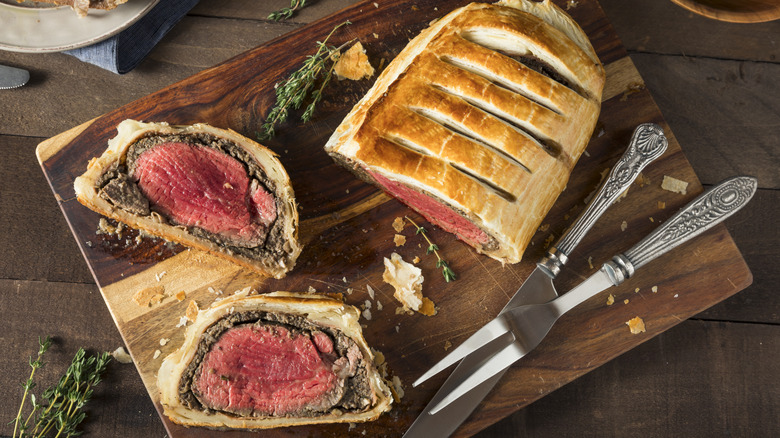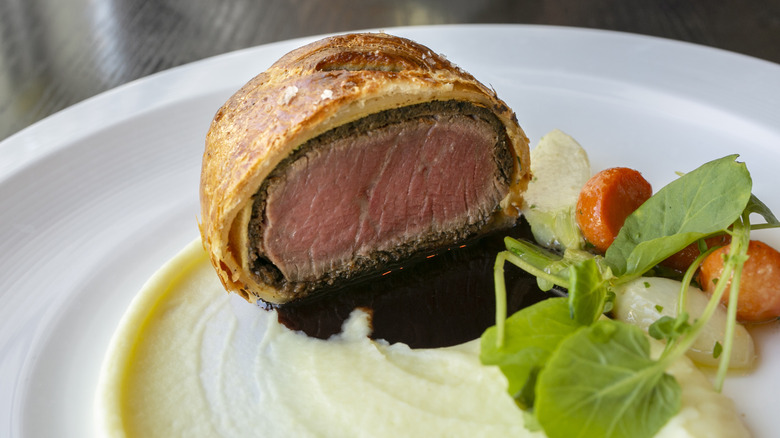The Battle Of Waterloo May Be Responsible For The Invention Of Beef Wellington
In 2023, beef Wellington garnered a little TV airtime when the dish made an appearance on Shark Tank, thanks to the owners of the California-based company Wellington. Prior to that, enthusiasts of Gordon Ramsay's shows probably spotted it on television, too — after all, it's one of the dishes that Ramsay has said would be on the table for his ideal last meal. But the origins of the dish reach back much farther than its more recent TV fame.
In fact, one common theory regarding how and when beef Wellington was born points to the early 1800s, when Arthur Wellesley led Anglo-Allied troops to victory over Napoleon Bonaparte in The Battle of Waterloo, ending the 23-year Napoleonic wars. While the battle was fought and won in 1815, it was the year before that Wellesley became the Duke of Wellington (he eventually would rise to Prime Minister), and the dish was purportedly named for him.
There are several different versions of the same story, though. While some say that the grand centerpiece dish was named for Wellesley because of his achievement at Waterloo, others say that it's because Wellingtons were frequently made for the Duke by his chef. Still others point to the shape of the dish, which is reminiscent of the foot of a Wellington boot, a style that Wellesley pioneered after his shoemaker created it for him.
The history of beef Wellington may go back even further
While there appears to be a feasible link between the birth of beef Wellington and Arthur Wellesley, the culinary history of the dish is still somewhat murky. While the specific combination of beef tenderloin, pâté, duxelles, and parma ham wrapped in puff pastry is unique to the English dish, other cultures around the globe were creating similar dishes centuries before by wrapping meat with flour-based concoctions prior to cooking it.
Beef Wellington also bears a remarkable similarity to a French dish called filet de boeuf en croute. In fact, the name is sometimes used interchangeably with beef Wellington in various recipes. The primary difference between the two is the lack of parma ham in filet de boeuf en croute. To explain the dish's link to Wellesley, some historians point to the victory at Waterloo yet again, saying that the name of the beefy dish was changed to a more English moniker after France's defeat.
In the 1950s and '60s, beef Wellington became popular among Americans, starting with recipes printed in newspapers. It ultimately shot to fame after Julia Child showed viewers how to make the dish on her beloved show "The French Chef." Today, beef Wellington often tops the list of dishes that are complicated to make at home, but remains a hallmark among fine dining restaurants and ambitious home cooks looking to impress guests.


